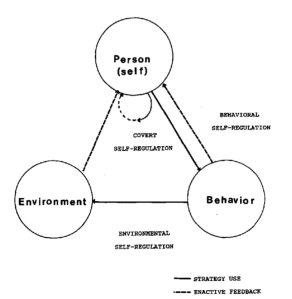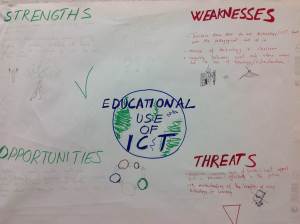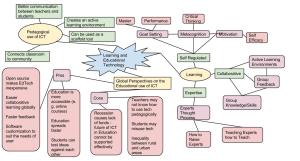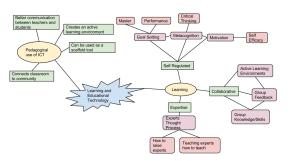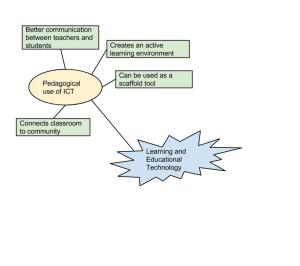Planning Phase:
Describe your solo phase task:
Read the 2 articles we have been given, plan, make ICE notes and reflect.
What topics and concepts are related to your task?
- Rubrics and Self-assessment Scripts Effects on Self-regulation, Learning and Self-efficacy in Secondary Education.
- How can Primary School Students Learn Self-regulated Learning Strategies Most Effectively? A Meta-analysis on Self-Regulation Training Programmes.
Set a goal for this work period:
3 days.
How confident are you that you will achieve your goal?
Semi-confident.
Main 3 Points From Each Article + 2 Ice Notes:
Article 1: Rubrics and Self-assessment Scripts Effects on Self-regulation, Learning and Self-efficacy in Secondary Education.
Key Points:
- Self-assessment is a crucial process in self-regulation. Self-assessment can effected by the by the goals the student is pursuing, the teachers instructions and on the students perceived effectiveness of self-assessment. Therefore, it’s important to discover which interventions promoting self-assessment are best at developing self-regulation in students.
- Self-regulation is a key ability needed to be successful in further education. Hence, it is important to intervene in students’ early academic years so that the students develop effective self regulation. Additionally, by intervening early in students’ academic learning, teachers can stop the development of performance and avoidance goals in students – which have a negative effect on their learning.
- The use of both rubrics and scripts helps to promote self-assessment – and therefore self regulation. Hence, teachers should help students by providing them with both of these tools.
Ideas:
- As a future teacher, I must remember to make sure that self-assessment criteria are clear to students from the beginning of the learning process. By doing this, my students can have clear expectations about what their goals should be – and should then be able to plan accordingly.
- Even though rubrics help to promote self-regulation, they do so less than scripts. Therefore, it would be better for me to focus students’ attention on the process of the task/learning (as scripts do) than on performance (as rubrics do).
Connections:
After reading the article, my knowledge has been increased on how essential feedback can be in raising students self-regulation and, consequently, their ability to achieve academic success. I also learned more about the ways in which rubrics and scripts benefit student learning – and how to better implement these tools in my future learning (e.g- providing rubrics at the start of a course/task to help students establish appropriate goals).
Elaboration:
For my real life example, I’d like to explain how a rubric (provided by my teacher) was used to help me set my goals and regulate my learning for one of my courses.
Here is the rubric with which we access to at the start of the course: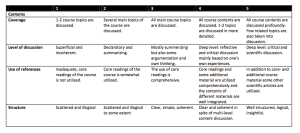
By providing me with the above rubric, my teacher allowed me to see what the assessment criteria was for the task and the scale that would be used for grading.
Because I knew the assessment criteria (and what was required to reach a certain grade in that criteria), I was able to plan the time I would need to spend on research and writing more accurately than I would of been able to without the rubric. Hence, the rubric helped me manage my time wisely and also set very accurate goals for myself – as I knew what I needed to include in my final product to reach my desired grade (my goal).
Additionally, by using the rubric I was provided with, I was able to monitor my progress on my goal by self grading my work. This was done by comparing what I had written so far with the criteria in the rubric – then considering how my work compared to the criteria. Did it need editing or additional research? Did it need more of my own personal opinions or more scientific references? If so, the rubric helped me notice this – which allowed to make additions or modify my work in order to achieve my desired goal.
It is in such a way that rubrics can be used as a very helpful tool in helping students plan and achieve their goals.
Source: Panadero, E., Tapia, J.A. and Huertas, J.A. (2012). Rubrics and self-assessment scripts effects on self-regulation, learning and self-efficacy in secondary education. Learning and individual differences
Article 2: How can Primary School Students Learn Self-Regulated Learning Strategies Most Effectively? A Meta-analysis on Self-Regulation Training Programmes.
Key Points:
- Empirical studies have found that training programmes are more efficient if students are learning domain specific content. Therefore, learning strategy instruction should be related to context. Relating strategy instruction to context can be done easily by ingraining it within the regular course instruction itself.
- Training programmes should create learning environments that are conductive to self-regulated learning – so that learners have the chance to apply and practice their newly acquired learning strategies.
- Research has found that young children benefit the most from self-regulated learning training. One major reason for this is because, during their early academic years, students construct their learning and self-efficacy attitudes – and these attitudes are easier to direct towards positive learning styles and behaviour whilst they are still developing (in comparison to attempting to change the attitudes once they have already established negative learning styles and behaviour).
Ideas:
- When trying to teach learning strategies to my future students, I must remember to try and make sure that my interventions are integrated into the learning context itself to enhance the intervention’s effectiveness. It is also important to take the various different aspects of learning into consideration – paying attention to both the metacognitive and motivational aspects of learning and making an effort to combine the two within my interventions.
- Research has shown that the interventions conducted by researchers are more effective than the interventions conducted by regular teachers. One explanation for this is that – as researchers are the ones who developed the interventions – they better understand how best to implement the interventions. Therefore, in order to attempt to combat this problem, I should try and attempt to receive guided and detailed instruction from an expert when learning new intervention strategies. By doing so, I would hope to elevate my ability to effectively use interventions correctly.
Connections:
Although I learned a lot from this article, I feel the biggest contributions to my knowledge fell into two areas. Firstly, the importance of integrating learning strategies into context was reinforced for me. And, secondly, my knowledge on constructing effective training programmes grew: I now understand that the most effective training programmes should train cognitive (elaboration + problem solving strategies), metacognitive (planning strategies) and motivational strategies (e.g – feedback on work) – whilst providing information on strategy use and its benefit to learning.
Elaboration:
For my real life example I’d like to consider how a teacher could implement a metacognitive and motivational strategy to help a student self-regulate their learning. Within this example I will use the fictional student I used in my other elaboration – John.
It is halfway through the course year and John has been given his first graded assignment – to choose a book and write an analytical essay on it. John is fairly confused on how to begin the task and is also feeling fairly unmotivated to start work. Due to this, John asks his teacher for guidance.
Upon asking for help John is presented with a flow chart (acting as a script) and instructed to read it through thoroughly before he begins using it. He is told to come back and discuss with the teacher whenever he wants to – although the teacher informs him that he/she will come and check sporadically on his progress.
An example flow chart is given below – which I will make context related to increase it’s effectiveness (by including example questions that could be present in the flow chart):
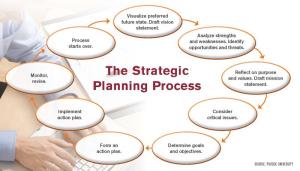
(Source: http://www.agweb.com/article/steps_for_strategic_planning/)
In using the flow chart John is able to commence working on the task.
He visualizes his future state and writes down what he wants to achieve (setting his goals – e.g: “What book do you want to write about?”).
He then analyzes the strengths and weaknesses of his set goal – and considers what opportunities he can take to achieve his goal and what threats may hamper achieving the goal (SWOT analysis of his goal – e.g: “What are the strengths or writing about this book? Are there any weaknesses? What opportunities can you take to help yourself write about this book? Are there any threats that could hamper your progress?”).
He then reflects on why he is attempting to achieve this goal (purpose and value) and writes his reasons down (a motivational strategy – e.g: “Why do you want to write this essay? What is the point in completing this task?”).
Following this he considers critical issues that might have arisen from his SWOT analysis.
After doing so, he is able to reflect upon his goal and make changes if the critical issues are particularly bothersome.
He then begins to form an action plan (study plan/work plan) to manage his time effectively and meet the deadline set for the work.
Afterwards, he is able to begin following his action plan and commences work on the task – knowing that he must monitor and revise during the course of his work (as the teach instructed him to first read the whole flowchart).
During this whole process the teacher is able to check up on John to see if any help is required in the setting of his goals and provide feedback on his work so far (assisting the use of the metacognitive strategies and motivational strategies being used).
Hence, by providing John with the flow chart and supporting him, the teacher guides John in self-regulating his learning. Hopefully this guidance allows him to successfully achieve his set goals and complete the task at hand.
Source: : Dignath, C., Buettner, G., Langfeldt, H-P. (2008). How can primary school students learn self-regulated learning strategies most effectively? A meta-analysis on self-regulation training programmes. Educational Research Review, 3, pp. 101-129
Reflection:
Recall your Solo phase planning. How well did you succeed? Why?
I failed at succeeding in achieving my goals as I became ill during the implementation of my plan.
Describe one challenge that you had during your task performance:
Being ill has been the biggest challenge I have faced in completing this task. Due to being sick – I often found it hard to focus clearly on the task at hand. Even sometimes encountering physical problems (headaches, nausea, etc) that hampered my ability to follow my study plan.
What did you do to help yourself when facing a challenge?
I broke down my work hours into much smaller amounts and spread them out over a much longer period of time. This helped me progress slowly through the work and also allowed me to make sure the quality of work I was producing was meeting my usual standards.
What could you do differently next time?
Eat more vegetables and wash my hands?…or get a better immune system. Maybe all of three? Hahaha.



